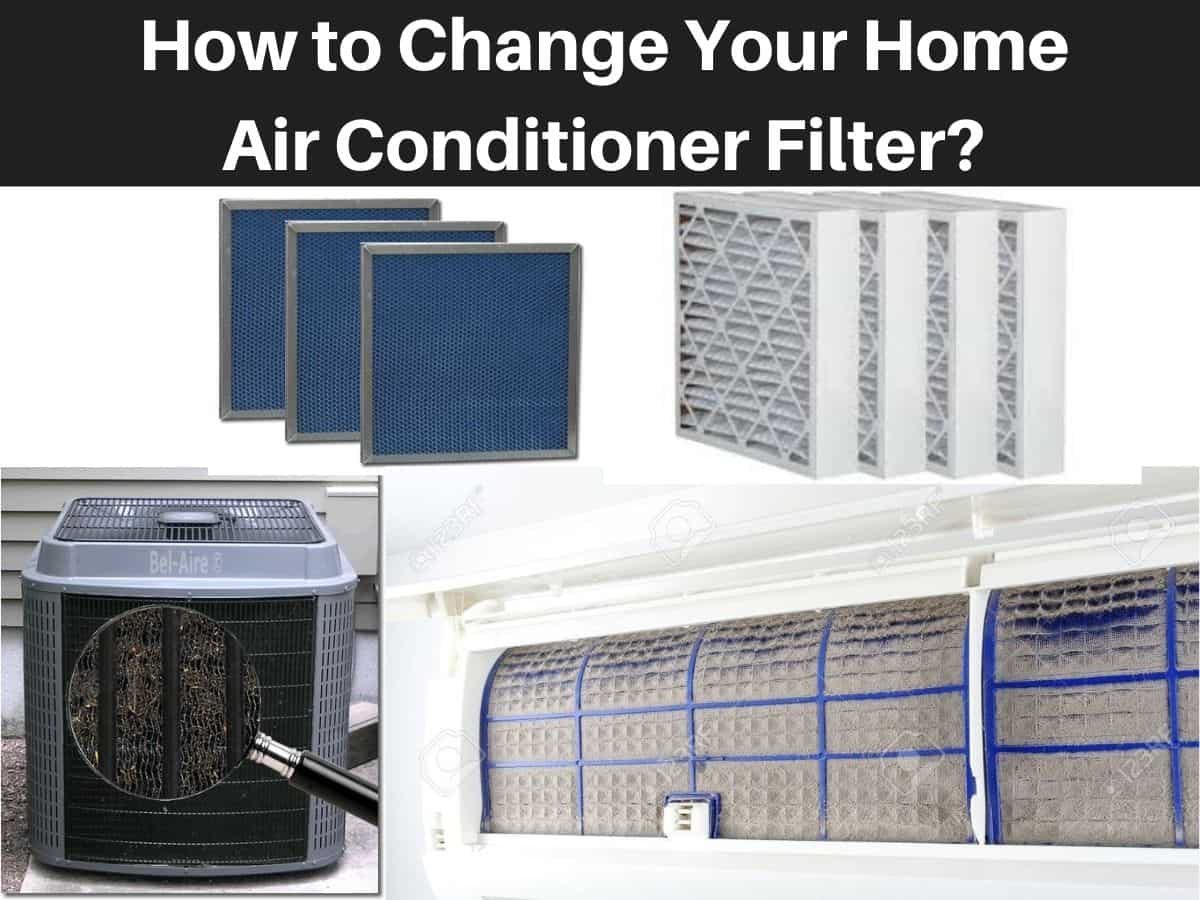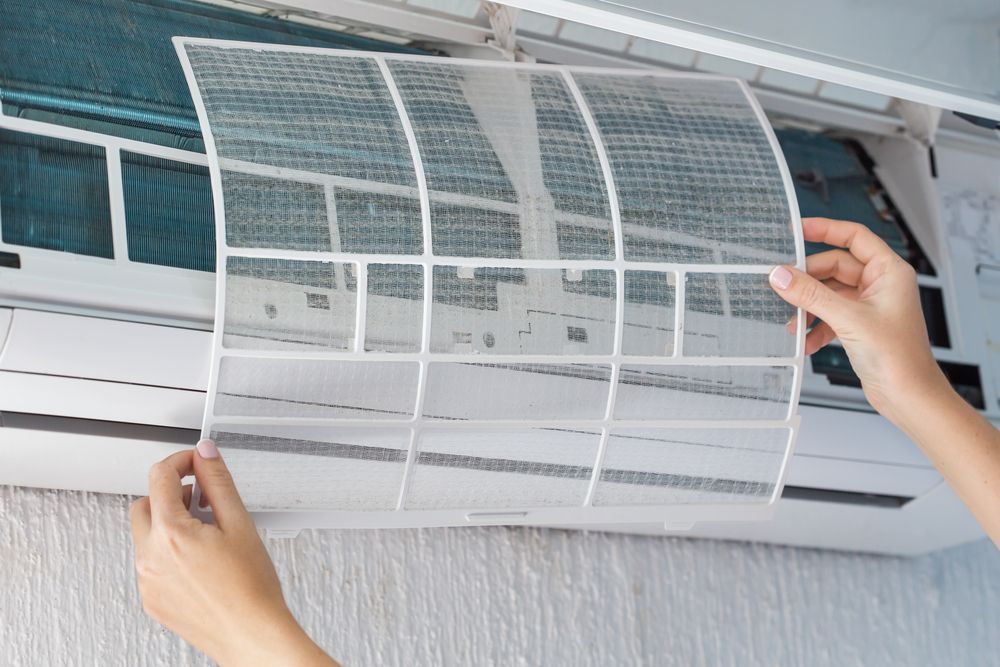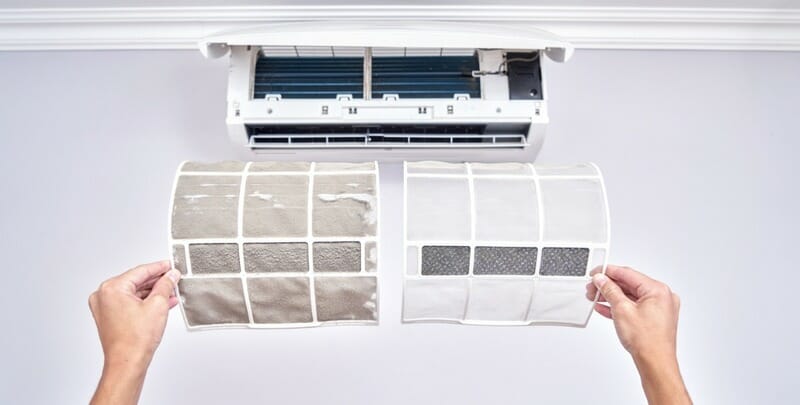How To Change The Air Conditioner Filter

Changing your air conditioner filter is a simple but crucial task that can significantly impact your AC system's performance, energy efficiency, and your indoor air quality. This guide will walk you through the process step-by-step, empowering you to maintain your AC unit like a pro.
Why Change Your AC Filter?
Think of your AC filter as the first line of defense for your air conditioner and your home's air quality. It traps dust, pollen, pet dander, and other airborne particles before they can circulate through your ductwork and into your living spaces. Regularly replacing your filter provides numerous benefits:
- Improved Air Quality: A clean filter captures more pollutants, leading to cleaner and healthier air for you and your family.
- Enhanced AC Efficiency: When a filter becomes clogged, it restricts airflow, forcing your AC unit to work harder to cool your home. This increased strain translates to higher energy bills.
- Prolonged AC Lifespan: Overworked AC systems are more prone to breakdowns and require more frequent repairs. Changing your filter regularly reduces stress on the system, extending its lifespan.
- Reduced Repair Costs: Prevention is always cheaper than cure. By keeping your filter clean, you can avoid costly repairs associated with a struggling AC system.
When to Change Your AC Filter
The frequency with which you should change your AC filter depends on several factors, including:
- Filter Type: Different filter types have varying lifespans. We'll delve into filter types later in the guide.
- Household Size: Larger households typically generate more dust and debris, requiring more frequent filter changes.
- Pets: If you have pets, especially those that shed, you'll need to change your filter more often. Pet dander is a major contributor to filter clogging.
- Allergies/Asthma: Individuals with allergies or asthma may benefit from more frequent filter changes to maintain optimal air quality.
- Usage Frequency: If you run your AC unit constantly, especially during peak seasons, you'll need to change the filter more often than someone who only uses it occasionally.
As a general rule of thumb, aim to change your AC filter every 1-3 months. However, it's always best to check your filter monthly and replace it if it appears dirty or clogged. A visual inspection is the most reliable way to determine if a change is needed.
Choosing the Right AC Filter
AC filters are not one-size-fits-all. Choosing the right filter is important for both air quality and system performance. Filters are typically rated using a MERV (Minimum Efficiency Reporting Value) rating. The MERV rating indicates the filter's ability to capture airborne particles. Here's a breakdown:
- MERV 1-4: These are basic filters that primarily capture large particles like dust and pollen. They offer minimal filtration and are typically inexpensive.
- MERV 5-8: These filters offer a good balance between filtration and airflow. They capture more particles than MERV 1-4 filters and are suitable for most homes.
- MERV 9-12: These filters provide excellent filtration, capturing small particles like mold spores and pet dander. They are a good choice for individuals with allergies or asthma.
- MERV 13-16: These are high-efficiency filters that capture very small particles, including bacteria and viruses. They are typically used in hospitals and clean rooms.
Important Considerations When Choosing a MERV Rating:
- Higher MERV ratings can restrict airflow. If your AC system isn't designed for a high-MERV filter, it could lead to reduced cooling efficiency and potential damage to the system. Consult your AC unit's manual or a qualified HVAC technician to determine the appropriate MERV rating for your system.
- Fiberglass filters (typically MERV 1-4) are the least expensive option, but they offer the least filtration. They are generally suitable for very basic filtration needs.
- Pleated filters (typically MERV 5-12) offer better filtration and are a more popular choice for residential use. They have a larger surface area, which allows them to capture more particles without significantly restricting airflow.
Ultimately, the best AC filter for you depends on your specific needs and the capabilities of your AC system. Don't hesitate to seek professional advice if you're unsure which filter to choose.
Tools and Materials You'll Need
Before you begin, gather the following:
- New AC Filter: Make sure you have the correct size and type of filter for your AC unit. Check your old filter or your AC unit's manual for the correct dimensions.
- Screwdriver (if necessary): Some AC filter access panels are secured with screws.
- Vacuum Cleaner (optional): You can use a vacuum cleaner to remove any dust or debris around the filter compartment.
- Gloves (optional): Some people prefer to wear gloves to avoid contact with dust and allergens.
- Flashlight (optional): A flashlight can be helpful if the filter compartment is in a dimly lit area.
Step-by-Step Guide to Changing Your AC Filter
Now, let's get to the actual filter replacement process:
Step 1: Turn Off Your AC Unit
This is crucial for your safety. Turn off your AC unit at the thermostat. This prevents the unit from cycling on while you're working on it. If you're unsure how to turn it off at the thermostat, locate the breaker for the AC unit in your electrical panel and switch it off.
Step 2: Locate the Filter Compartment
The location of the filter compartment varies depending on the type of AC unit you have. Common locations include:
- Furnace or Air Handler: The filter is often located in a slot or compartment on the side or bottom of the furnace or air handler. This is common for central AC systems.
- Wall-Mounted AC Units: The filter is usually located behind a removable panel on the front of the unit.
- Ceiling-Mounted AC Units: The filter is often located behind a grille or panel on the bottom of the unit.
Consult your AC unit's manual if you're having trouble locating the filter compartment.
Step 3: Remove the Old Filter
Once you've located the filter compartment, remove the access panel. This may involve unscrewing a few screws or simply sliding the panel open. Carefully remove the old filter. Note the direction of the airflow arrow on the old filter. This indicates the direction the air flows through the filter and is important for installing the new filter correctly.
Be prepared for some dust and debris to fall out when you remove the old filter.
Step 4: Clean the Filter Compartment (Optional)
Use a vacuum cleaner with a brush attachment to clean the inside of the filter compartment. This will remove any accumulated dust and debris that could contaminate the new filter.
Step 5: Insert the New Filter
Insert the new filter into the compartment, making sure the airflow arrow on the filter points in the same direction as the arrow on the old filter. The airflow arrow typically points towards the blower motor. Double-check that the filter is properly seated in the compartment.
Step 6: Replace the Access Panel
Replace the access panel and secure it with screws if necessary. Make sure the panel is properly closed to prevent air leaks.
Step 7: Turn Your AC Unit Back On
Turn your AC unit back on at the thermostat or switch the breaker back on in your electrical panel.
Step 8: Record the Date
Write the date you changed the filter on the filter frame or somewhere near the AC unit. This will help you remember when to change it again.
Troubleshooting
Here are a few common issues you might encounter and how to address them:
- Cannot Locate the Filter Compartment: Consult your AC unit's manual. If you still can't find it, contact a qualified HVAC technician.
- Filter is Stuck: Gently wiggle the filter to loosen it. If it's still stuck, try using a flathead screwdriver to pry it loose. Be careful not to damage the filter compartment.
- Filter is the Wrong Size: Return the filter to the store and purchase the correct size. Using the wrong size filter can damage your AC unit.
- Access Panel Won't Close Properly: Make sure the filter is properly seated in the compartment. Check for any obstructions that might be preventing the panel from closing.
Professional Help
While changing your AC filter is a relatively simple task, there are situations where it's best to call in a professional:
- If you're uncomfortable working with electrical equipment.
- If you're unable to locate the filter compartment.
- If you have a complex AC system.
- If you suspect there's a problem with your AC unit.
A qualified HVAC technician can diagnose and repair any issues with your AC system and ensure that it's running efficiently. Think of refrigerant as the 'blood' of your AC system, carrying heat from inside to outside. Problems with the refrigerant level or other components can be tricky to diagnose and fix without specialized knowledge and equipment.
Conclusion
Changing your AC filter is a simple yet vital maintenance task that can save you money, improve your air quality, and extend the life of your AC system. By following this guide, you can confidently change your AC filter and enjoy a cooler, cleaner, and healthier home. Remember to check your filter regularly and replace it as needed. Regular maintenance is the key to keeping your AC system running smoothly for years to come. Don't underestimate the importance of a clean filter!










